We’re about to leave the office of Jason How, CEO of Rotosound, when I ask, on the off chance, if he’s interested in cars. Jason sits bolt upright and reaches for his iMac screen, a signal that he’s about to spin it around and show me some pictures from his archives. I knew this was as good as an affirmative answer so I sat back down, putting all thoughts of the usual questions asked earlier in the day to one side.
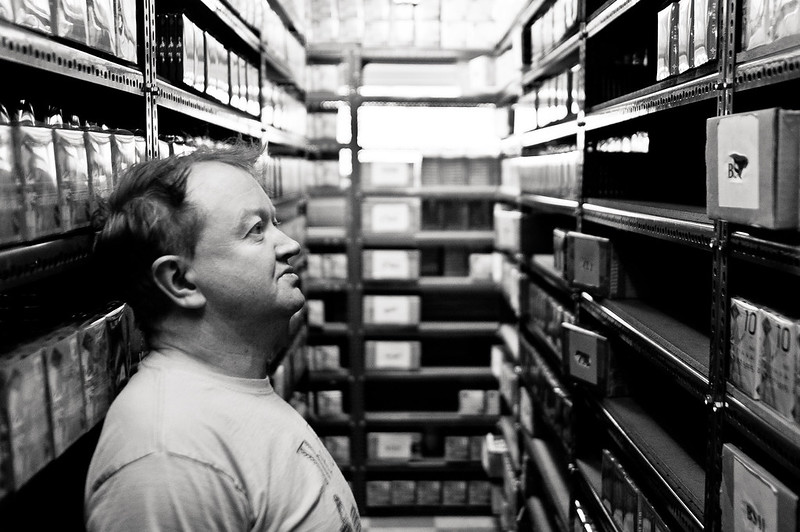
Jason @ Rotosound by chiscocks, on Flickr
I’m not very experienced at interviewing people, much less with asking questions that people might be interested in. What I was trying to achieve with this visit, and my aim with the Basschat visits of the future, isn’t to hear the ‘party line’, the sort of information you can gleam from the companies website or marketing bumf. I want to dig beneath the surface a bit.
As Jason showed me some pictures of his other passion, a selection of vintage Saabs sourced from all over the country and starting with a chance encounter at a scrapyard as a teenager, I felt I had built up a really good picture of the kind of man that runs a business as central to the music industry as tyres are to the car industry.
Hands up who uses strings?
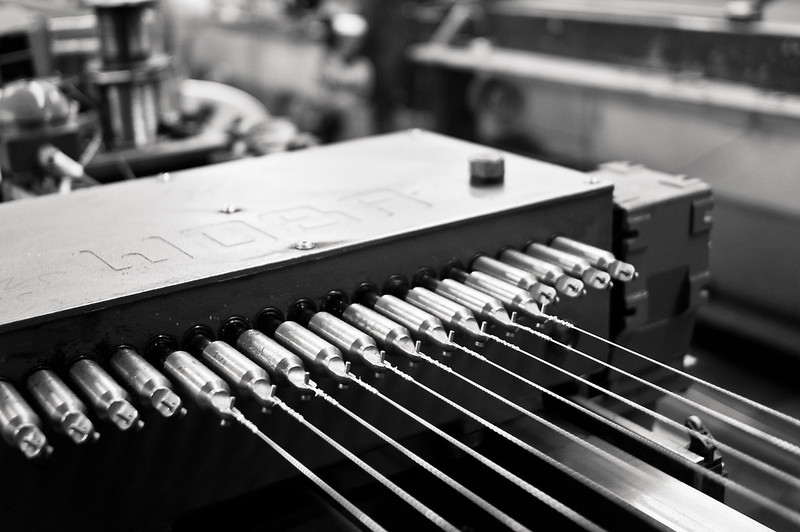
Strings laid out by chiscocks, on Flickr
I wasn’t sure what to expect on this visit. I honestly didn’t know whether there would be masses of machinery, robot controlled laser canons or chimps running up and down a coal shaft with bass guitars. Well, perhaps the last two were slightly fanciful but I’m trying to put across the fact that I hadn’t really seen a factory before, but in a more interesting way.
Upon our arrival (I brought BC bookie David with me; partly for company, partly to handle the video and partly to witness and ledger our Harvester meal on the way home) we were shown upstairs into a hallway with two offices, one of which was lined with guitars of all shapes and sizes.
After a nose around, flipping through a diary, calling people on the phone and leaving rude post-it notes around said office, a cheerful little geezer marched in, introduced himself to us as Jason, and immediately ordered a cup of tea for everyone. I had heard that Jason was a musician himself – he later corrected me and said he’s ‘not a widdler’ – judging by the weird and wonderful instruments here and the tracks he later sent by email I should say he’s got a good ear for song writing. I even found a vintage Casio DG-10 somewhere. Upon hearing my excitement he looked around. “How does it sound?” he said, clearly having forgotten he had it stowed away. “sh*t” I replied. Instantly we felt very welcome and we started to ask the usual sorts of questions – how did Rotosound begin? Who were your first customers? (As I mentioned, most of this can be found on the website)
What really intrigued me were the machines which built the strings. Jason designed and built many of them himself, and very impressive they are too. As a fan of mechanical engineering I was keen to see them in operation (see video) and impressed that everything was manufactured ‘in house’ but also using machinery built in the same building. How many companies can claim to be that British?

Winding wrap by chiscocks, on Flickr
In many ways, that ‘Britishness’ is Rotosound’s USP (Unique Selling Point, for those who don’t watch The Apprentice). Jason is quick to suggest how it’s a relatively important factor in foreign markets and the history of the brand is something many other manufacturers simply can’t compete with. As anyone ever caught behind a coach load of Americans in Blenheim will agree, foreign customers see this particular aspect as a key ingredient of a quality British product.
The heritage of the brand is a big factor, then. But what about it’s future? Should the company permanently be looking at it’s past? Jason explains that whilst they have tried various innovations, their bread and butter really is the traditional roundwound string which remains largely unchanged since production began. I should imagine it’s a safe but slightly frustrating position to be in for someone like Jason who seems to enjoy inventing and finding solutions to things. When you see the machines, though, you can see that the focus for his efforts needn’t be in changing a winning product but in changing how they’re made – faster, better, safer, cheaper… all require innovation and attention to detail. Around 40 employees and a few million quid’s worth of stock and material sit in one building and that’s a lot to sink your teeth into (N.B Jason is not a vampire, least we saw no evidence to suggest this to be the case)

Tension by chiscocks, on Flickr
In the 80’s Jason reckons they would have needed 3 times the workforce they have now. Having built 25 machines himself exclusively for Rotosound his passion comes across as he highlights the many features and innovations which have come to the fore over the years. Rather than just copying his father’s work, he’s adapted and improved it.
Maybe that’s why we wound up talking about old Saabs. Perhaps Jason feels a certain sadness that a company once successful like Saab went under. Perhaps it puts things into perspective and urges him on to keep Rotosound at the top of the game – or perhaps it’s a fascination of mechanics. He even sounded semi interested when I started going on about the Citroen SM I drove recently.
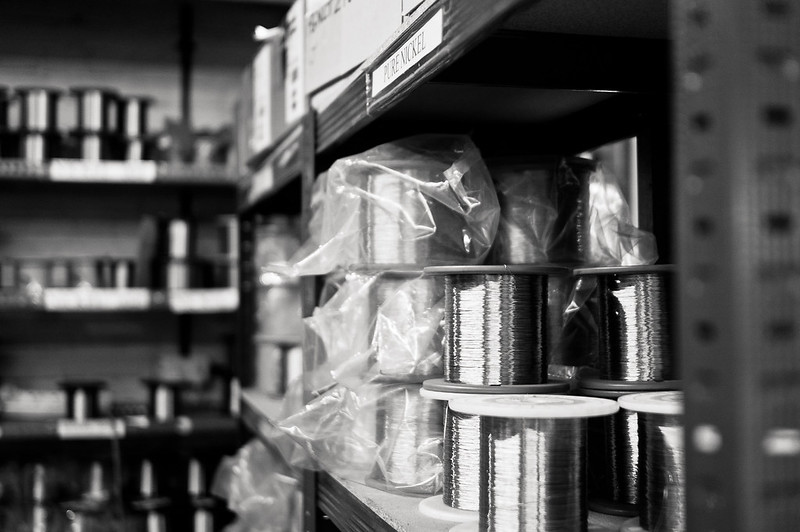
Shelving by chiscocks, on Flickr
I hope this visit has given you all an insight into the way Rotosound works. Hopefully now you will see a pack of Rotos on the shelf and think of the relatively small company behind this global icon which underpins some of the biggest developments in our musical history and the instruments which were used to write it.
Long live Rotosound and thanks for having us for the day. (now all please stand for the national anthem!)
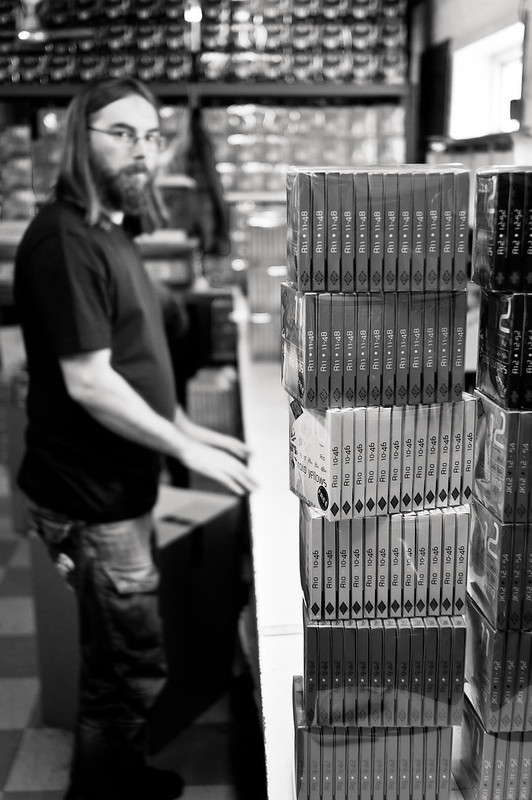
Shipping room by chiscocks, on Flickr
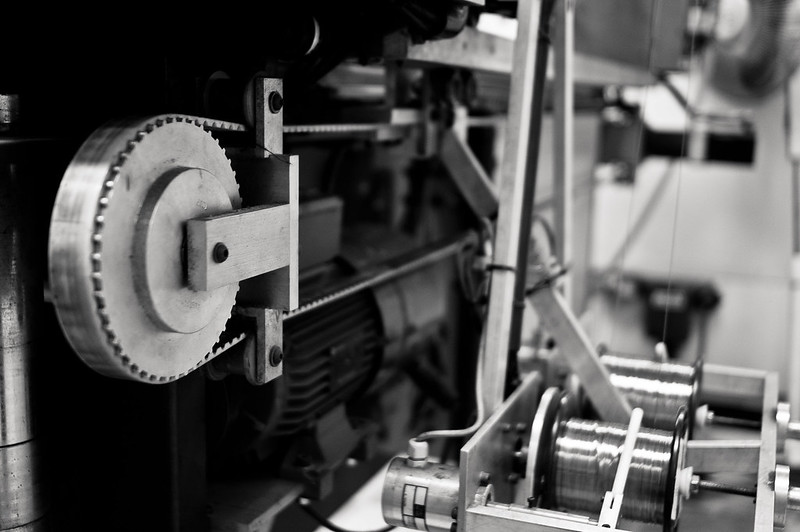
String machine by chiscocks, on Flickr
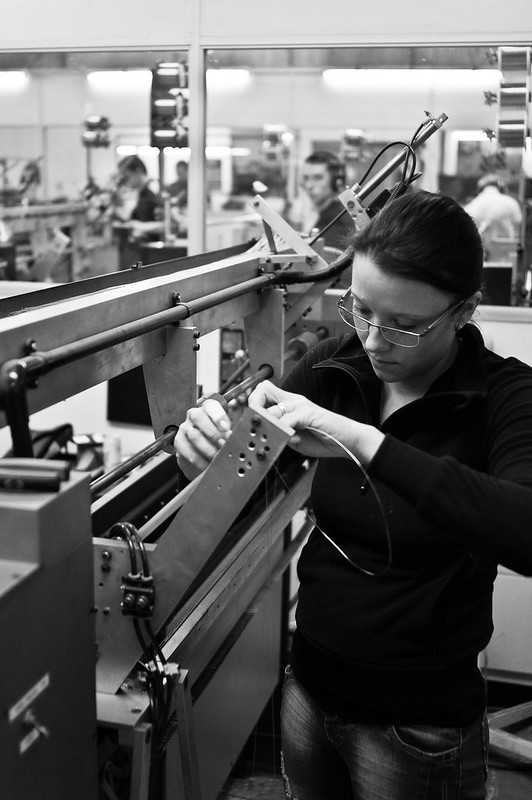
Making strings by chiscocks, on Flickr

Working at machine by chiscocks, on Flickr
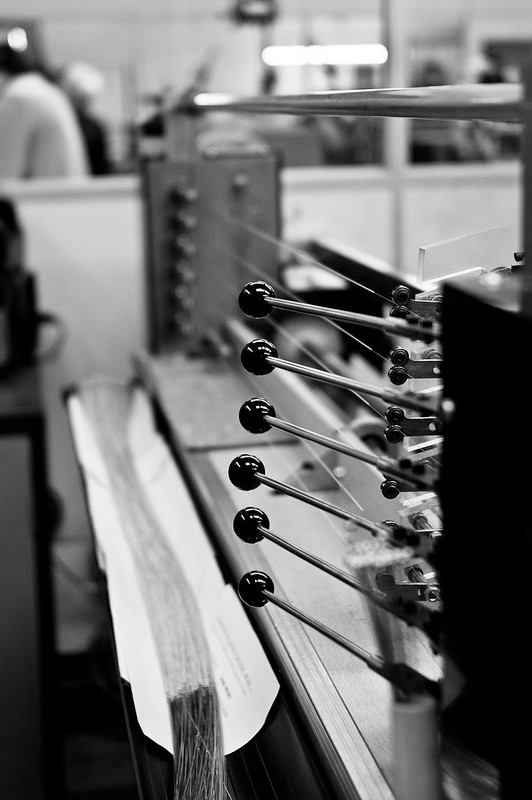
Machinery by chiscocks, on Flickr
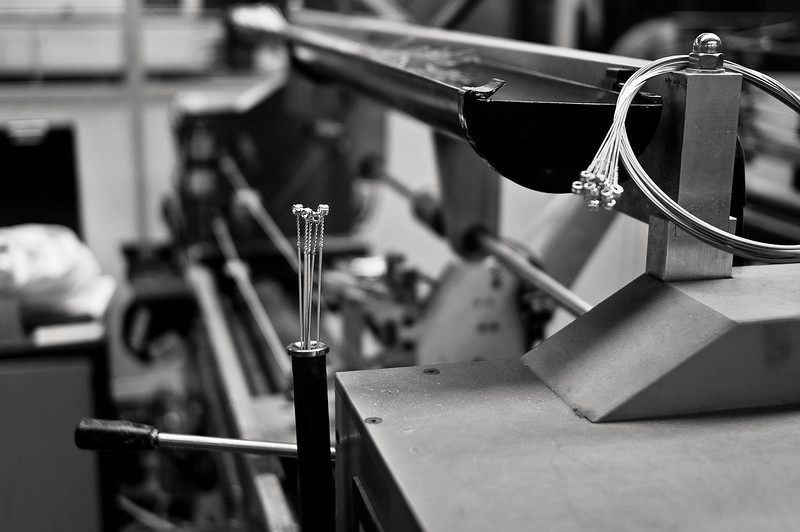
String hopper by chiscocks, on Flickr
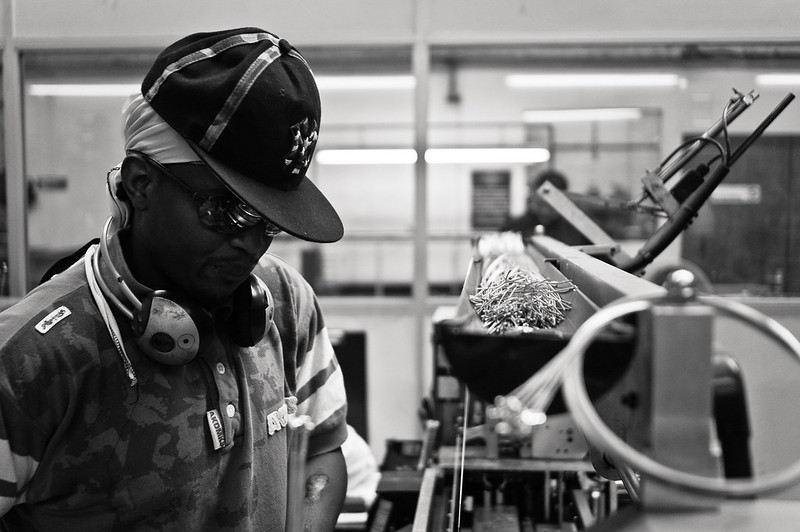
Busy factory by chiscocks, on Flickr
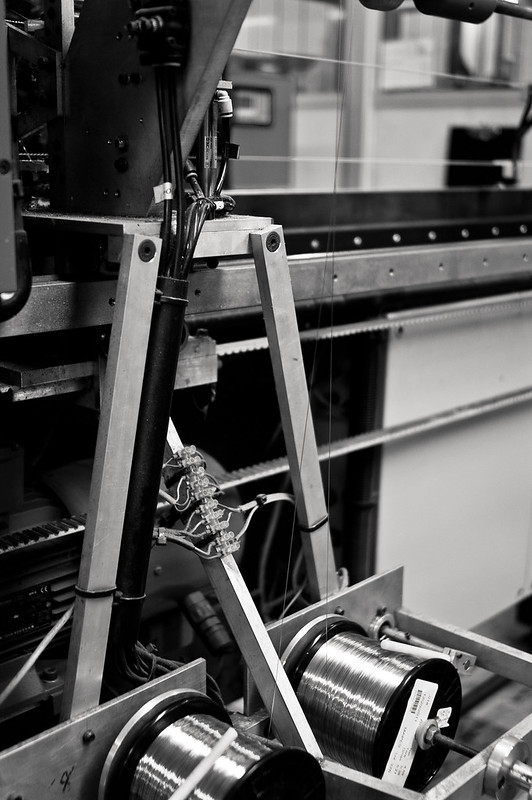
Silent operation by chiscocks, on Flickr

Finished strings by chiscocks, on Flickr
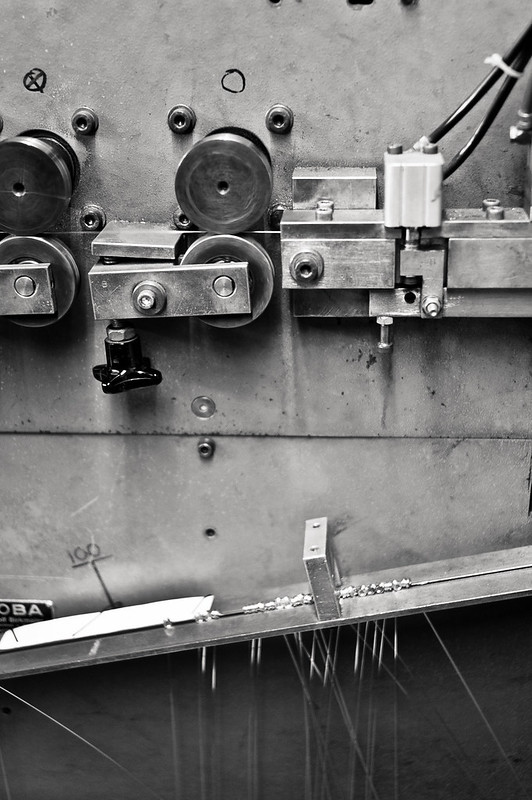
Ball ends by chiscocks, on Flickr
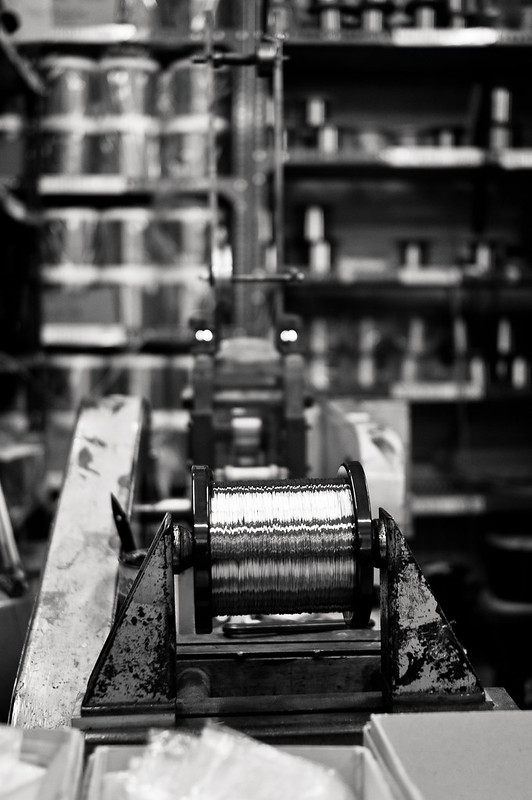
Monel by chiscocks, on Flickr
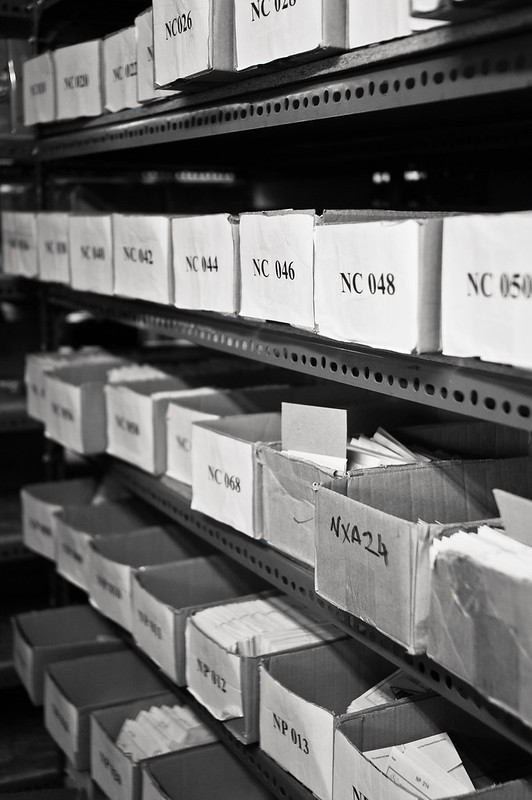
Warehouse by chiscocks, on Flickr
Edited by ped
-
 5
5




Recommended Comments
There are no comments to display.